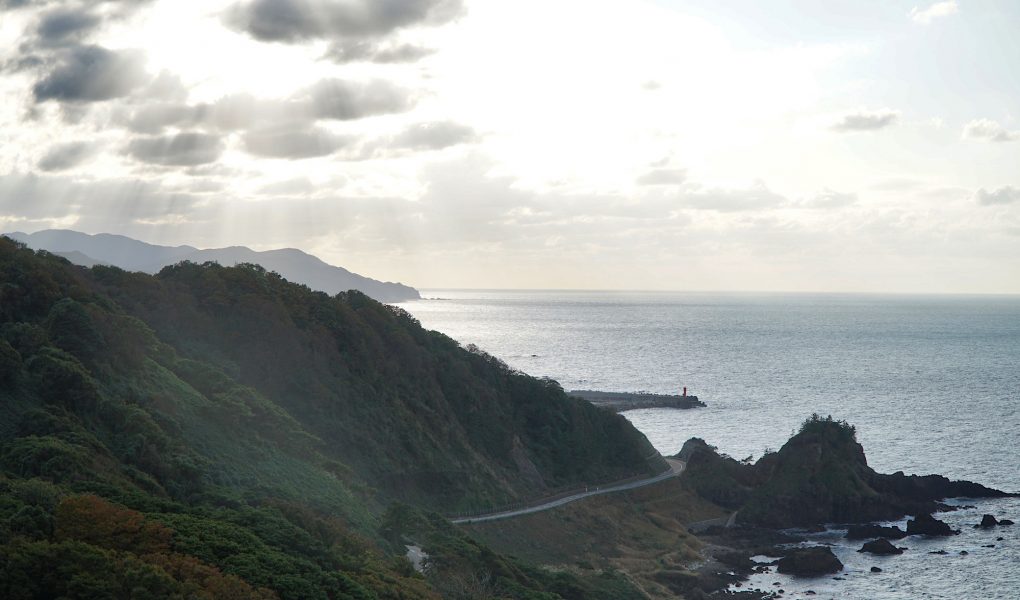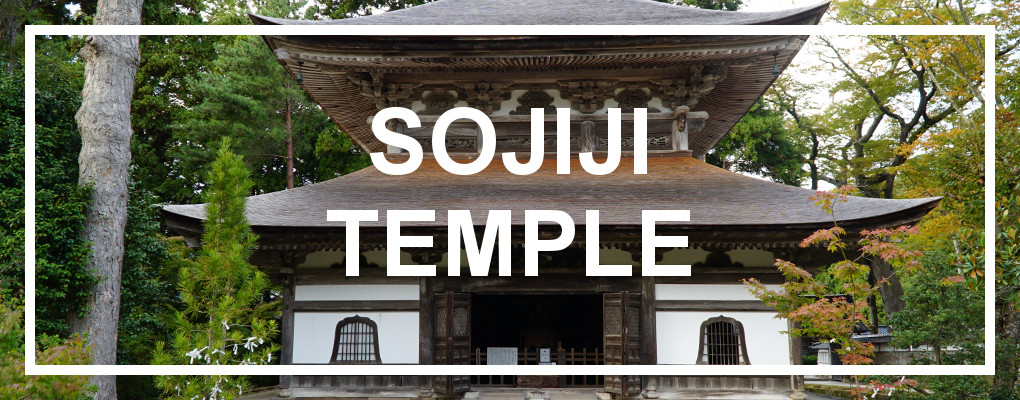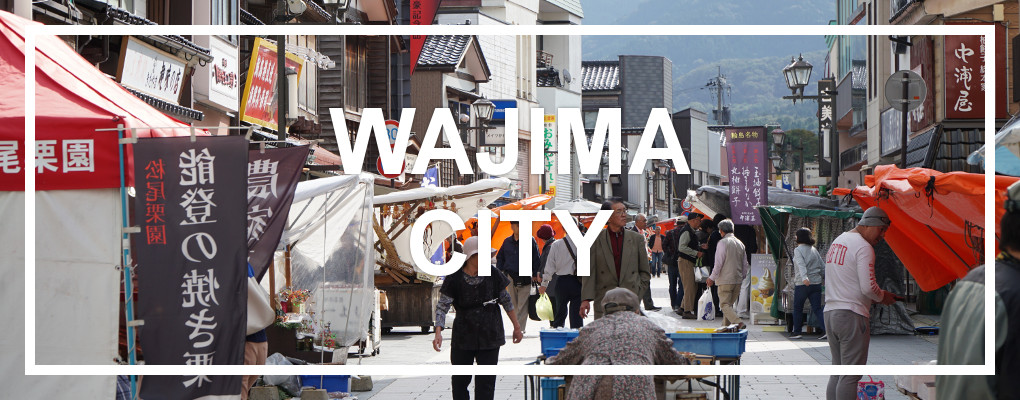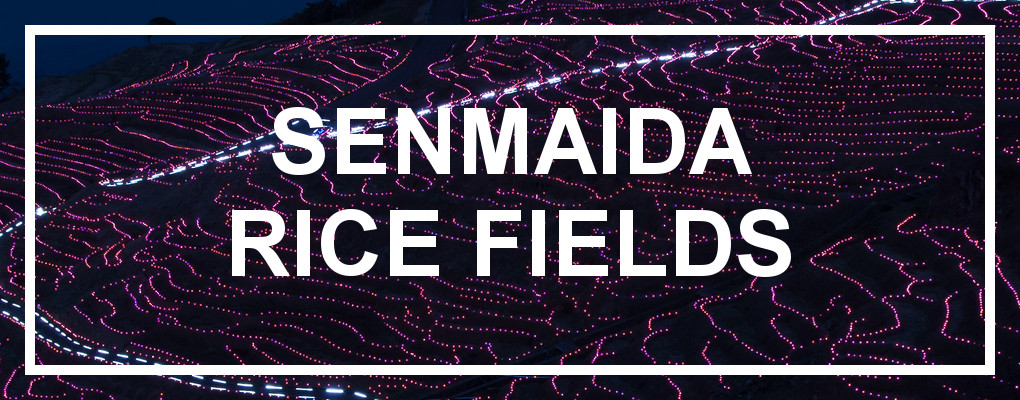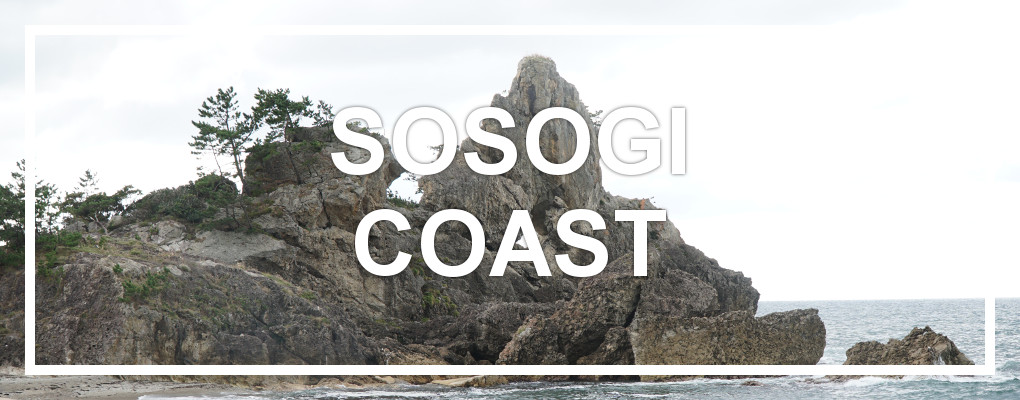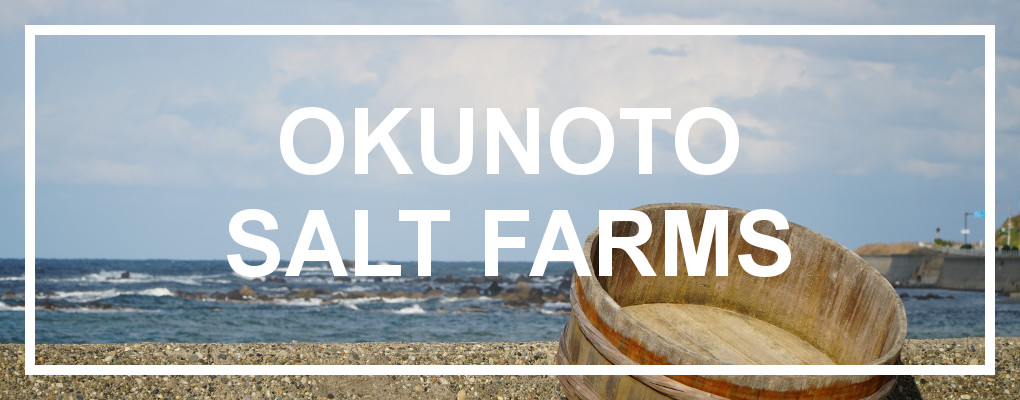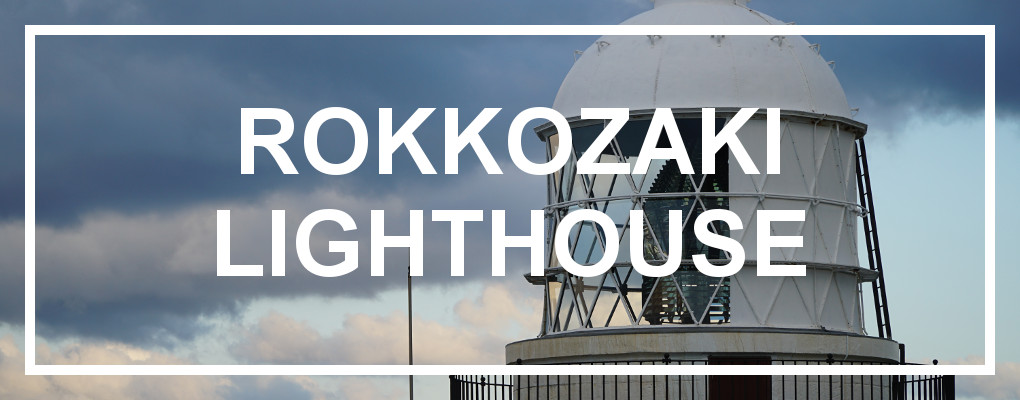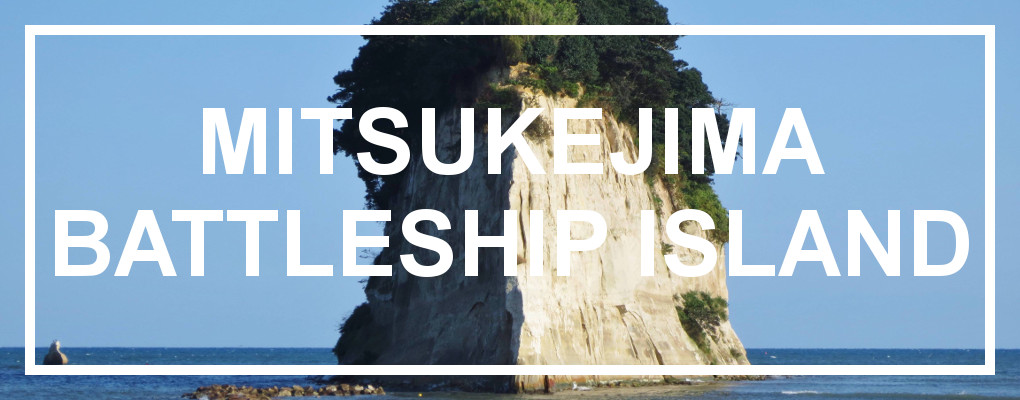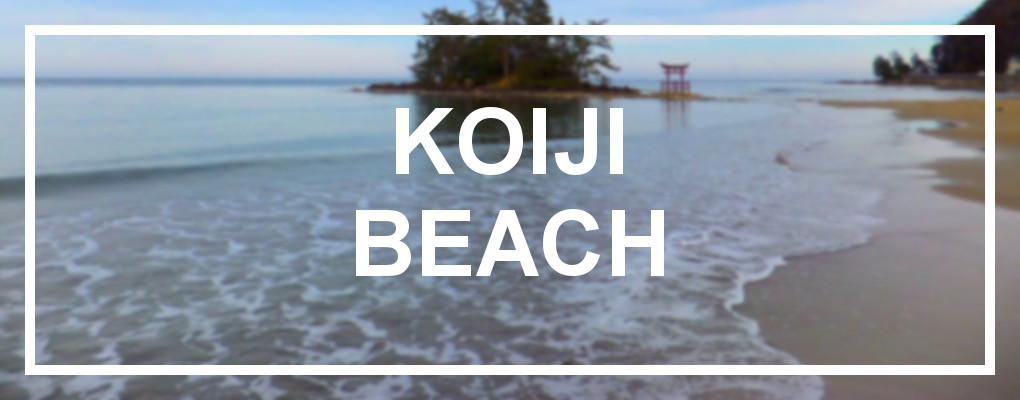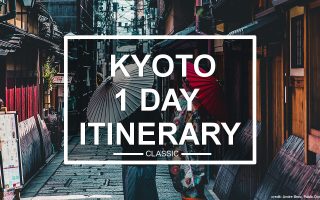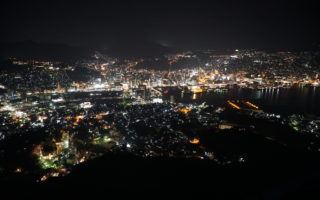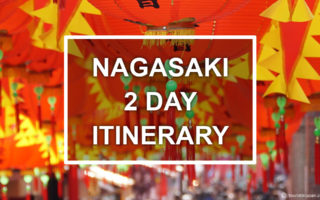Okunoto is the northern, and most remote half of the rural Noto Peninsula. The Okunoto Coast is the coastline that hugs this area. The area is known for its remoteness and beautiful nature, and is best explored by car. Oku means “inner”, “deep” or “bottom”, and so Okunoto translates to something like “inner Noto” or the “back of Noto“.
The Okunoto Coast has two distinct sides; the wild and windy western coast which faces the Sea of Japan, and the calm eastern coast which faces Toyama bay. The two sides appear so different, that the contrast itself is a bit of an attraction.
Along the Okunoto Coast one finds a number of interesting attractions, both natural and manmade. If you are looking for a peaceful side trip, far away from the city, deep in rural Japan, then the Okunoto coast is truly worth one or two days of slow exploration.
Map of Okunoto
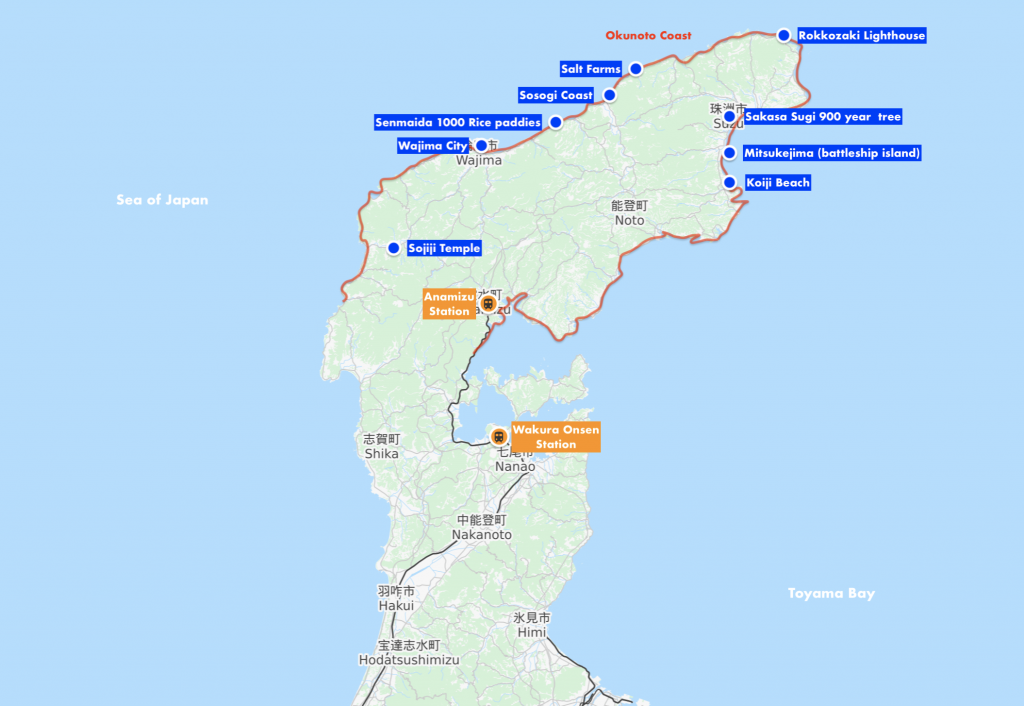
Attractions of Okunoto
Sojiji Templeis a Zen temple located about half-way up the Noto Peninsula. Sojiji was once the most important Zen temple in Japan, overseeing 16,000 subordinate temples. Unfortunately, the temple buildings took great damage in a fire in 1898. As a consequence of the damage, the temples function as a main seat for the Soto Zen sect was transferred to a temple in Yokohama, south of Tokyo. Today all buildings have been rebuilt. Nearest parking: Parking is available across the road from the entrance to the temple grounds. Parking coordinates: 37.287216, 136.768389. Entry fee: ¥400 |
Wajimais the main city of Okunoto (inner Noto). It is especially famous for its lively morning market, which has existed for over 1000 years. The city also has some interesting museums, including the Kiriko Art Museum and the lacquerware museum, where one can study the famously beautiful and durable lacquerware of Wajima. Nearest parking: Free parking is available in multiple locations across the city. Parking coordinates: xxx Entry fee: free |
Senmaida 1000 Rice Fieldsis an area of terraced rice paddies facing the sea of Japan. The 1004 rice fields are beautiful against the blue sea, and dduring certain months, when the fields are flooded the reflections at sunset are without comparison. During winther months the edges of the fields are lit with small LED lights, which make a beautiful art installation. Nearest parking: Parking is available right next to the rice fields. Parking coordinates: 37.424158, 136.997957. Entry fee: free |
Sosogi Coastis a rocky and wild coastline of about 2km. This stretch is loved for its strangely shaped rock formations and the contrast between the blue sea and the dark stone. Main attractions here include Madoiwa (rock formation), Water flowers, the kissing tunnel and the Tarumi Waterfall. Nearest parking: Parking is conveniently available next to Madoiwa Rock. Parking coordinates: 37.458627, 137.076036. Entry fee: free |
Okunoto Salt Farmsdescribes a collection of salt farms located along a stretch of the Okunoto Coast. One of the most visited farms is a road side station which has not only a salt shop, but also a museum which explains both the history of salt farming and the different processes which have been used over time. An old fashioned salt production is kept running to preserve the history and culture. Other farms are located in the area, and it’s highly suggested to visit a few when in the area. Nearest parking: Free parking is available at the road side station. Parking coordinates: 37.486361, 137.113225. Entry fee: ¥100 (museum) |
Rokkozaki Lighthouseis located at the tip of the Noto Peninsula. The western architecture and it’s white color really makes it stand out. The most impressive attraction here, however, is the fantastic view of the Sea of Japan. It is said that the sun can be seen both rising out of the sea and setting in to the sea from this location. Nearest parking: Parking is available at a road side station near the lighthouse. However, a 10-minute up-hill hike is required to reach the building. Parking coordinates: 37.526002, 137.324428. Entry fee: free |
Mitsukejima (battleship island)is an island just off the coast on the calmer eastern side of the Noto peninsula. The island is said to be discovered by the important Buddhist monk Kukai. It has earned is nick name “battleship island” because of the shape of the island, which resembles that of a war ship. Nearest parking: Parking is availble right by the beach. Parking coordinates: 37.397636, 137.243545. Entry fee: free photo credit: Qurren, wikimedia.org |
Koiji Beachmeans “love road beach”. The beach attracts young lovers, but the background of the name is sad. The story goes, that a boy and girl in love were both killed by the sea here. The boy was lured into water by an enemy who wanted his girl. Sadly he drowned and so did the girl after throwing herself in the water after him. Today a love bell is placed near the beach, and lovers come here to ring it. Nearest parking: Parking is available right in front of the beach. Parking coordinates: 37.370716, 137.240044. Entry fee: free Photo credit: kiwa dokokano, licensed under CC. |
Getting Around Okunoto
Getting around Okunoto is easiest by car. Route 249 follows the coastline almost all the way around. Alternatively one can use the public bus system, but departures are infrequent.
Car rental
Getting around the Noto Peninsula is best done by car. While you can book private tours, you do get a greater freedom by renting a car and driving yourself. A good starting point is either Kanazawa or Wakura Onsen, where rental cars are available. Book well ahead in time to avoid high charges.
Wi-Fi
You probably aren’t venturing out into rural Japan because you want to be closely connected with the world. However, having an internet connection can help you a great deal when navigating the roads in a remote area with few people to ask for help. Booking Pocket Wi-Fi or getting a Japanese SIM-card for your phone can be a great way to help yourself out of a tricky situation.
Accommodation
The Noto Peninsula is remote enough that you shouldn’t count too much on booking hotels on the go. Hotels are few, so booking in advance is advisable. Head over to booking.com to explore all hotel options on the Noto Peninsula.
Food
When you are leaving the comfort of the Japanese cities you must plan a bit ahead for your meals. On the Noto peninsula you can find small restaurants, noodle shops and convenience stores along the way, but don’t expect them to be everywhere like you might be used to. Whenever you see a convenience store, take the opportunity to stock up on some snacks, drinks and food.

